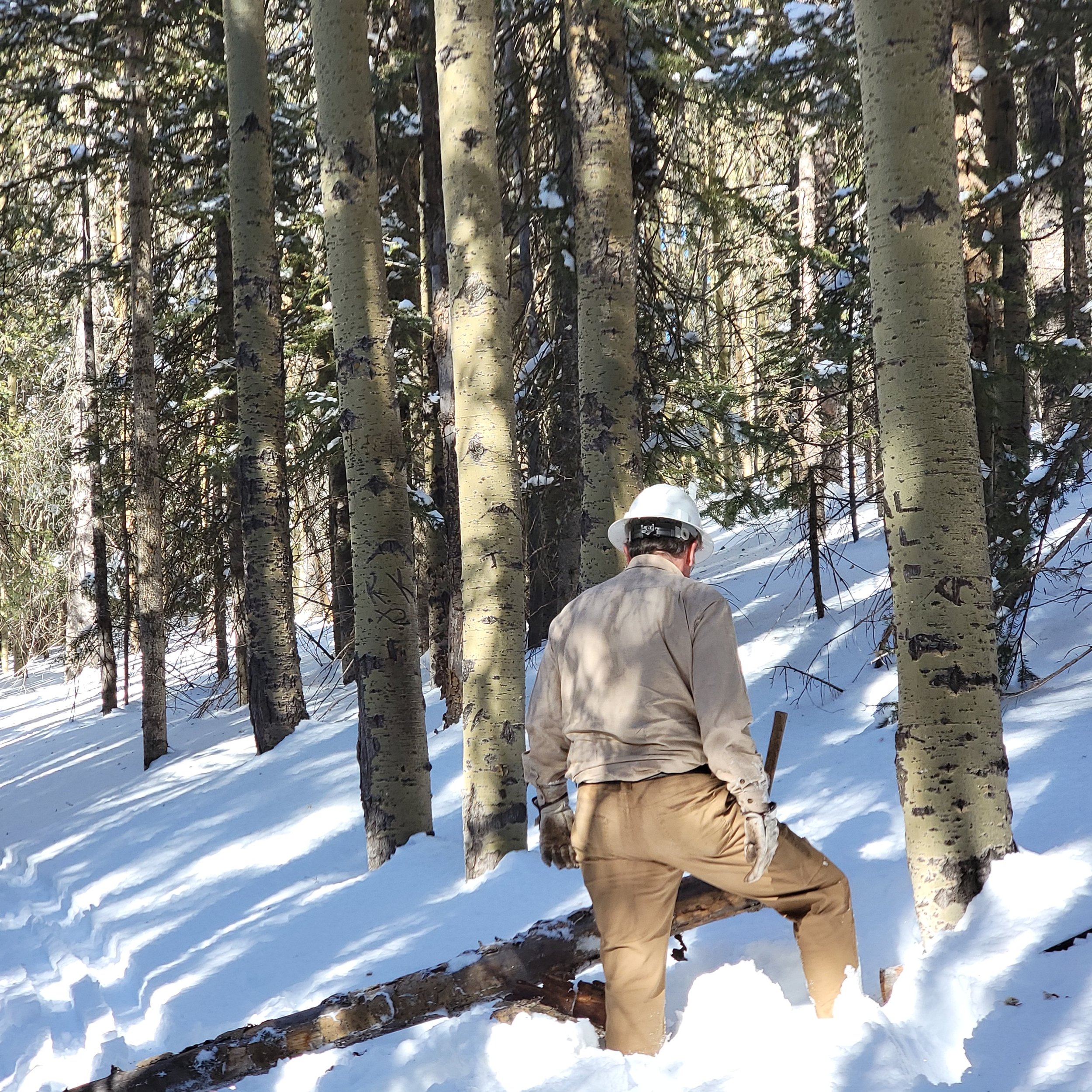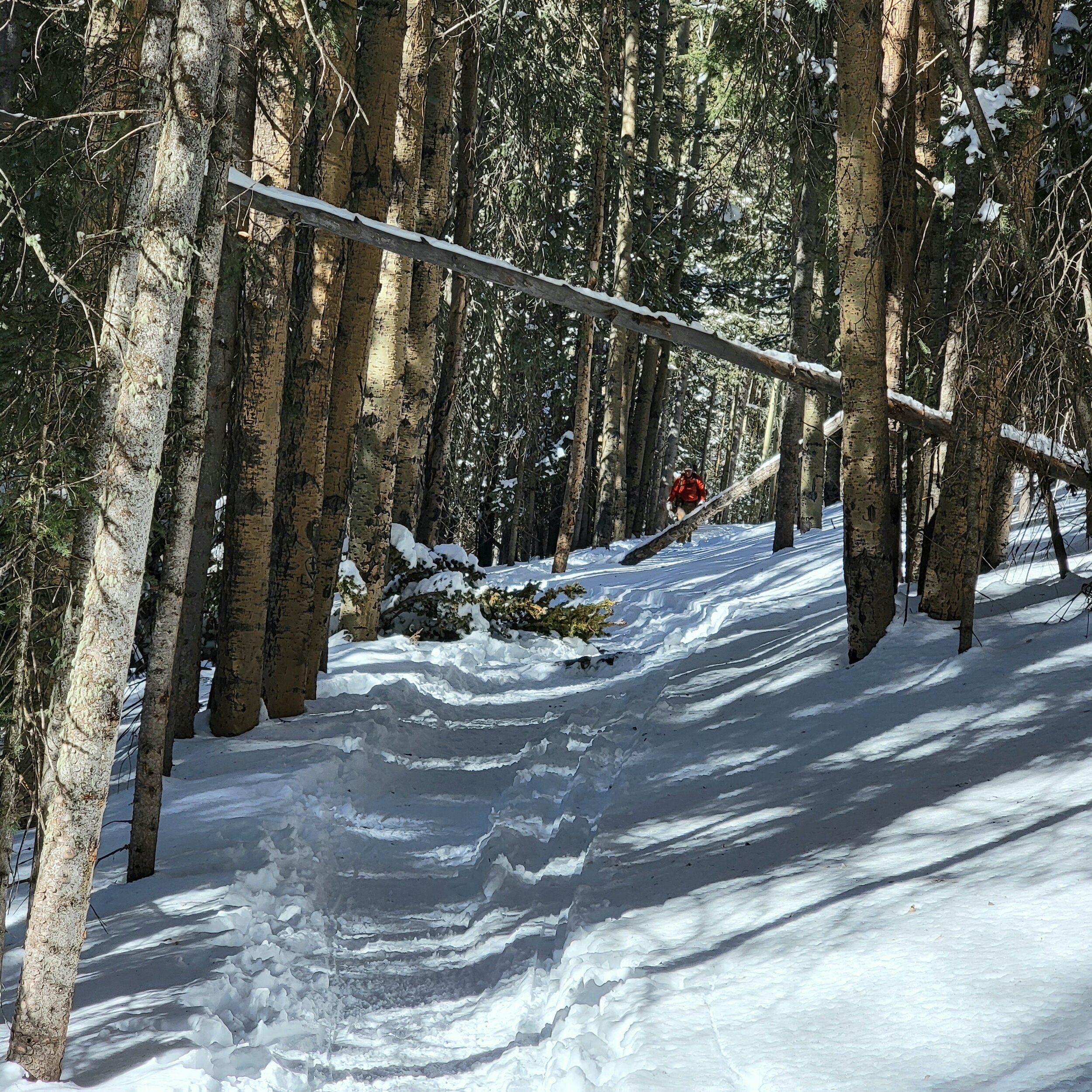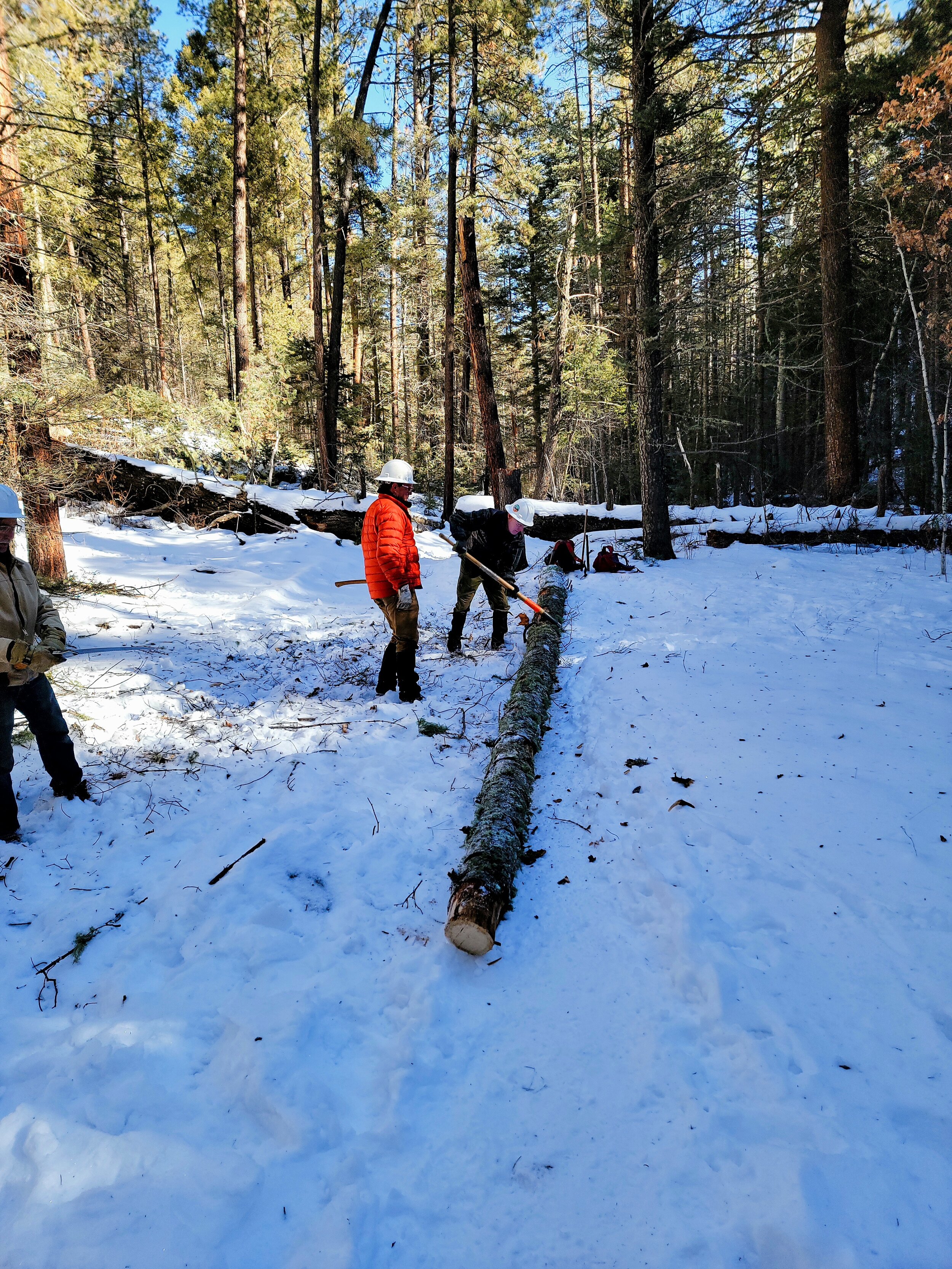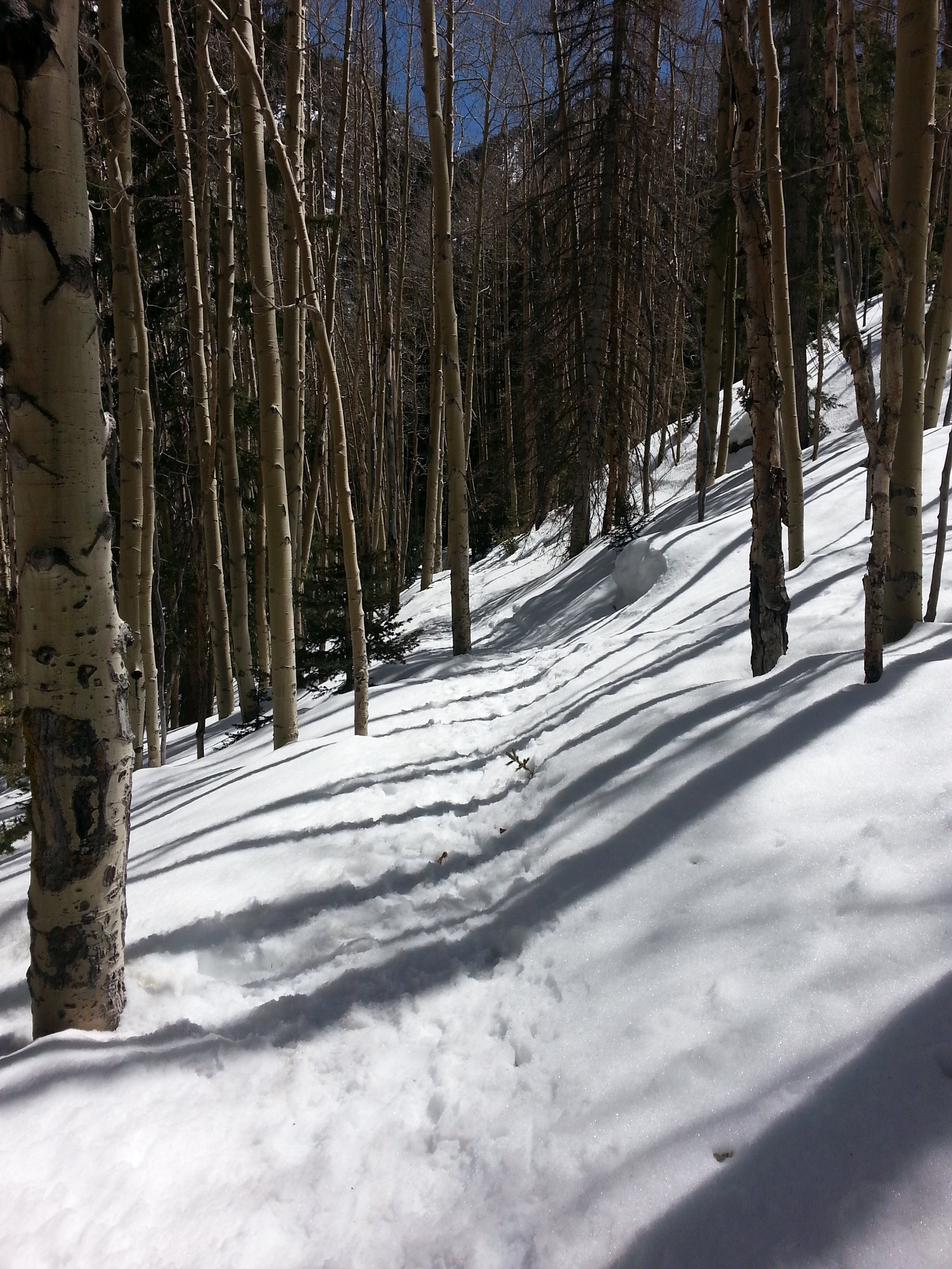
Project No. 10: Santa Fe National Forest Winter Operations
Remove new downfall during the winter from heavily used trails including, but not limited to, the Norski Track, Chamisa Trail, Bear Wallow-Winsor-Borrego Trails loop, and the Winsor Trail between the Ski Basin trail head and the Nambe Lake outfall crossing.
Project status: US Forest Service Approved
Date Planned: October 1, 2024 through June 30, 2025
Location: On trails throughout the Santa Fe National Forest as the need arises during the winter season.
The following trails fall under this standing project:
Chamisa Trail
Bear Wallow-Winsor-Borrego Trails loop
Norski Track
Winsor Trail between the Norski Track parking lot and the Nambe Lake outfall crossing
Others as requested and/or approved by the Forest Service
Project summary: During the winter routine trail maintenance activities cease due to the presence of snow on the trails and cold temperatures, and for safety considerations. However, the removal of downed trees blocking heavily used trails continues. We will rely on trail scouting by TERMITES volunteers and third-party reports to identify the need for the removal of downed trees blocking trails. Volunteers scouting the trail may saw and remove small trees and/or remove debris blocking the trail.
A number of the listed trails suffer from heavy tree downfall during the winter, especially the Winsor Trail before the Wilderness Boundary and parts of the Norski Track.
The goal is to keep skiable trails and trails heavily used by snow shoers open for use, and to reduce the hazards associated with snow shoers attempting to cross large downed trees on steep trails and/or steep hillsides.
Saw team size is determined by the number and size of trees needing to be sawn, the complexity of the tree needing to be sawn, the type and number of tools that need to be packed to the saw site, and the distance of the saw site from the trailhead. The minimum saw team size is typically two persons.
Maintenance Activity: Activities associated with the removal of downed trees will include simply moving the tree or debris off the trail, sawing trees using a large pruning saw, or the two-person crosscut saw, and then moving the tree debris off the trail. Tree debris is preferably moved off the trail some distance; however, snow and/or terrain may limit how far tree debris may be safely moved during the winter months. Where safety dictates, the Team Lead may postpone the sawing and removal of a downed tree(s) until the snow melts or conditions for sawing improve. Tools typically required may include small and/or big Silky saws, two person crosscut saw, small ax, wedges & draw knife, pick Mattock, cant hook, double bit ax, shovel, and trail work caution signs for use on heavily used trails.
Activity level: Will vary based upon the tasks needing to be accomplished, the distance the work site is from the work site, gain/or loss in elevation traveling to and returning from the work site, and trail conditions (presence of ice, depth of snow, etc.) This information will be provided when a call for volunteers is made.
Distance: Is based upon the work site(s) distance from the trailhead. The Project Coordinator will provide this information when a call for volunteers is made.
Elevation: Is based upon the work site(s) location. The Project Coordinator will provide this information when a call for volunteers is made for the project.

Young volunteer learns the art of crosscut sawing while his mother looks on.

TERMITES volunteer preparing to saw a downed tree blocking the Winsor Trail

Downed trees blocking Winsor Trail

Saw team rolls large tree off Winsor Trail

TERMITE volunteer saws a small tree blocking the trail

Winsor Trail in winter
